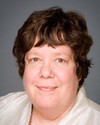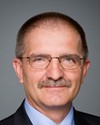Thank you very much.
I have no other questions right now. Thanks.
Evidence of meeting #75 for Health in the 41st Parliament, 1st session. (The original version is on Parliament’s site, as are the minutes.) The winning word was system.
A recording is available from Parliament.
Conservative

Colin Carrie Conservative Oshawa, ON
Thank you very much.
I have no other questions right now. Thanks.
Liberal

Hedy Fry Liberal Vancouver Centre, BC
Thank you very much, Madam Chair.
I want to focus on what both witnesses have been presenting us with today, which is that innovation is not necessarily about using a piece of technology, that innovation is about creative ways of thinking, creative ways of delivering health care, and creative ways for making a more cost-effective and efficient system that provides quality care. I think that's what we're talking about.
You've brought forward ideas for innovation in the delivery of health care.
I must say, Dr. MacDonald, that you made an excellent case for what I think we've all been talking about for the last 50 years, which is the fact that 60% of disease is preventable and that if we moved to a prevention model we would be able to create healthier populations that wouldn't require health care, etc. That was in the past, but currently we are dealing with people who are chronically ill. We have increasing numbers of people with diabetes, as you said, and with heart disease, etc. I just wanted to congratulate you on bringing forward that innovation in terms of looking at the innovative way of dealing with healthy populations, which is looking at prevention, etc.
Dr. Raza, one of the things that interested me was that you talked a lot about the health accord. I know that the delivery of health care is a provincial jurisdiction, in other words, who delivers it, when, and where the health care is delivered, etc., but the accord brought together what is known as a transformative change and an agreement for cooperation between jurisdictions. That was what made the 2004 health care accord remarkable: premiers and the Prime Minister agreed that they were going to look at a flexible delivery of health care, and there were places where the federal government had a huge role to play, such as health human resources, pharmacare, etc.
In that accord, a big chunk of one of the objectives was looking at new ways of delivering health care. The federal government was indeed instrumental in putting money into that in terms of looking at community care clinics. I've been to some in Calgary, and I've been to some across the country, in which, as you said, it was a multidisciplinary model where people were looking at taking care of the chronically ill at the community level and therefore decreasing the amount of hospital admissions, and therefore costs, etc.
I just wanted to ask you about your e-consultation model. How exactly would that work? Would it mean that somebody would have to examine the patient physically, or would it be merely an e-consultation working on simple symptoms, etc.? How exactly would that work to ensure that diagnoses are made based on the examination of patients as well as talking to patients?
Board Member, Canadian Doctors for Medicare
As you know from your own work as a family physician, oftentimes when we make referrals to specialists we may not need the whole meal deal. We may not need a complete workup or assessment from them. It may be a referral just to answer a few questions.
We used to do this through what we called the hallway consult, when a lot of health care was delivered rurally or when family doctors practised more in-patient medicine or in-hospital medicine. Oftentimes we would stop a specialist in the hallway and ask him a few questions about a difficult case we were having, and that would prevent a referral.
That's a process this project is trying to recreate. There are always going to be some patients whose cases are very complex and are going to need more than an electronic version of a hallway consult. This project isn't about reducing those referrals. Think of a Venn diagram: it's more about getting that overlap in the middle. As you can tell, 43% of referrals were avoided, so that's quite a large overlap.
Liberal

Hedy Fry Liberal Vancouver Centre, BC
Did that result in bringing down wait times and bringing down laboratory costs?
Board Member, Canadian Doctors for Medicare
It's a decentralized model. If I'm in Ottawa and I'm putting in an e-consultation, it doesn't have to go to the specialist at the Ottawa Hospital, necessarily. It could be someone in London, Ontario, or someone in Windsor. There's not a lot of great data, as far as I understand it, in terms of how much it's bringing down wait times. I can't answer that question for you today.
Liberal

Hedy Fry Liberal Vancouver Centre, BC
Okay.
You mentioned the $10,000 cost for joining a clinic in Calgary. I really would like to hear more about that, because the concern here is that the federal government is not supporting the principles of medicare or the Canada Health Act. I remember the last federal minister who actually stopped a clinic from charging people for health care—
Conservative

The Chair Conservative Joy Smith
Could I remind you, Dr. Fry, to keep your questions to technological innovation. I have heard very little about technological innovation.
Liberal

Hedy Fry Liberal Vancouver Centre, BC
Actually I'm responding to what the witness spoke about, clearly referring to this clinic in Calgary, and I wanted to comment on it. Is that okay, Madam Chair, if I comment on what the witness said?
Conservative
Liberal

Hedy Fry Liberal Vancouver Centre, BC
I am careful. I'm trying to follow the witness's questioning and the witness's train of thought, Madam Chair.
Liberal

Hedy Fry Liberal Vancouver Centre, BC
I think that's what we're supposed to do at committee.
I just wanted to say that the ability to break the Canada Health Act is going to deter any kind of innovation being able to provide a public health care system that is following certain rules. Is that what you were trying to say with regard to the clinics that are now charging people to join, breaking the Canada Health Act?
Board Member, Canadian Doctors for Medicare
I was commenting on how spreading innovation, including technological innovation, is something that we feel the federal government should take strong leadership in, and as part of the federal leadership and the health accord, that includes the spread of technological innovation. It should also include the Canada Health Act. When its principles begin to be violated and we have more for-profit clinics, it makes it much more difficult to appropriately plan and to coordinate because there just becomes too many cooks in the kitchen. And we know that for-profit medicine is both more expensive and leads to poor health outcomes. It's not something the federal government should be allowing to continue. Enforcing the Canada Health Act is a way to stop the spread—
Conservative

The Chair Conservative Joy Smith
Time is up now.
Is there any way we could get back to our topic of technological innovation? It seems to me what's happening here is we're trying to do a study on technological innovation to bring up new ideas, nobody's particular political platforms. What we're trying to do is get these new innovative ideas out there. So let's go on to Mr. Wilks.
NDP

Libby Davies NDP Vancouver East, BC
I have a point of order.
Madam Chair, I wouldn't have said anything but because you've made such a point of it, I would like to point out that from day one we were very clear that when we spoke about technological innovation we were also speaking broadly about practice and delivery. That was very much a part of our discussion on how this study would be undertaken. So I don't think anything has been out of order. I do find it very curious that only these witnesses are being kind of pegged with that.
Conservative
NDP
Conservative
NDP

Libby Davies NDP Vancouver East, BC
Then maybe we can go back on the record and look at it, but it was very clear.
February 26th, 2013 / 4:15 p.m.
Conservative

Wladyslaw Lizon Conservative Mississauga East—Cooksville, ON
On that point, Madam Chair, I think we have a topic that said very clearly, technological innovation. Sometimes people are going off the topic that you allowed, but I wish you'd stay on the topic. This is the topic and it's very clear. Maybe the witnesses were not informed what the topic of the study is.
NDP

Dany Morin NDP Chicoutimi—Le Fjord, QC
Madam Chair, correct me if I am wrong, but it seems to me that, since the beginning of this study, we have been talking about new technological advancements and innovations in the health sector, and not just technological innovations. So the two can be viewed separately. Correct me if I am wrong.
Conservative

The Chair Conservative Joy Smith
In February 2012 we adopted the following motion:
That the Committee undertake a study of technological innovation, including best practices, in health care in Canada....
Are you interpreting this as best practices?